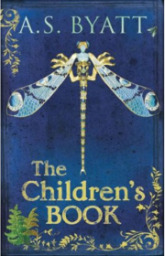 In A.S. Byatt’s forthcoming novel, The Children’s Book, a children’s author visiting a museum in search of inspiration for a magical story she’s writing hears a great anecdote but has “the feeling writers often have when told perfect tales for fictions, that there was too much fact, too little space for the necessary insertion of inventions, which would here appear to be lies… ‘It is so strong as it is,’ she explained. ‘It has no need of my imagination.'”
In A.S. Byatt’s forthcoming novel, The Children’s Book, a children’s author visiting a museum in search of inspiration for a magical story she’s writing hears a great anecdote but has “the feeling writers often have when told perfect tales for fictions, that there was too much fact, too little space for the necessary insertion of inventions, which would here appear to be lies… ‘It is so strong as it is,’ she explained. ‘It has no need of my imagination.'”
Byatt herself has recently raised similar concerns, voicing opposition — see, e.g., her discussion with Kera Bolonik in Bookforum — to the use of “a real person as the single original for a character.”
I wouldn’t adopt Byatt’s prohibition as a hard-and-fast rule, personally. But I have found that when my own fiction is inspired by actual people and events, as it almost always has been to one degree or another, it needs the space to become its own thing, and this is largely a matter of letting the characters and events morph, in incremental but ultimately fundamental ways, into ones that wind up being very different from those I had in mind when I started writing.
The most exasperating thing about this process is that it is absolutely essential but can’t be forced or hurried; the story will take as long as it will take, even when I put in time daily. No doubt every approach to writing has its drawbacks, but it seems like it’d be so much more expeditious to concoct stories purely from imagination, not at all tethered to the raw material of my experience. Maybe one day my brain will decide to cooperate.
See also Welty v. Maxwell on autobiography in fiction; On the importance of what is culled; and On the melding of fact and invention in fiction.